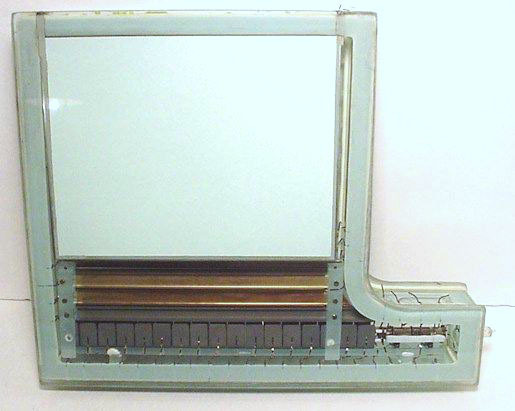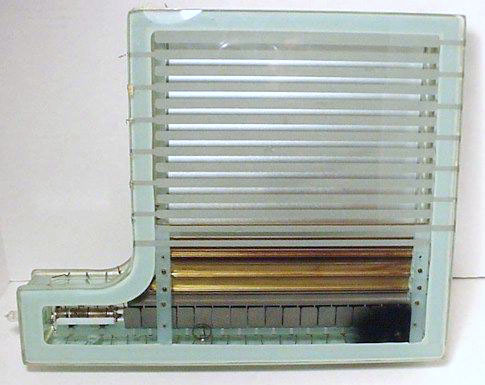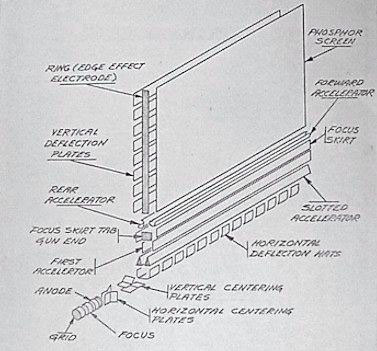|
In the early days of television, picture tube (CRT) technology did not allow for wide electron beam deflection angles, so a tube that could produce a large image was also extremely long. Packaging such a large tube was a problem, solved initially by mounting the tube vertically and using an overhead mirror to allow convenient viewing. The dream of the early designers was a flat tube that would make possible a TV receiver that could be hung on a wall. Pictured here is an experimental flat CRT from about 1964 made by the Video Color Corporation of Inglewood, CA according to designs which originated with Kaiser Aircraft & Electronics (Kaiser Industries) of Palo Alto, CA. |
||
 |
||
| This CRT used a conventional electron gun (lower right) which directed its beam into an array of U-shaped horizontal deflection plates. These plates caused the beam to be deflected up where is passed through a series of accelerating and focusing electrodes. Finally, an array of vertical deflection plates (horizontal strips) caused the beam to be directed forward to the phosphor display screen. The circuitry which drove this display tube was complex and expensive, and its intended application was primarily military (where cost is secondary to performance). | ||
|
|
||
|
|
||
| This tube shown in the pictures has an 11 inch (diagonal) display area and weighs about 15 lbs. It was constructed from pieces of 3/8 inch thick plate glass. Later versions had a larger display, and had nearly transparent vertical deflection plates so they could be viewed from either side. Multicolor versions were also made. |

